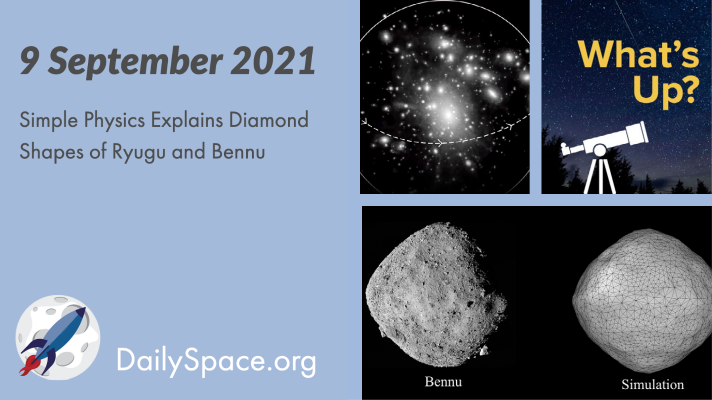
Sep 10, 2021 | Asteroids, Daily Space, Dark Matter, Galaxies, Mercury, Sky Watching, White Dwarfs
Using a simple model based on granular physics, like those used for modeling sand or sugar deposits, scientists have recreated the diamond shape of asteroids Ryugu and Bennu in computer simulations. Plus, the origins of loner dwarf galaxies and this week’s What’s Up.
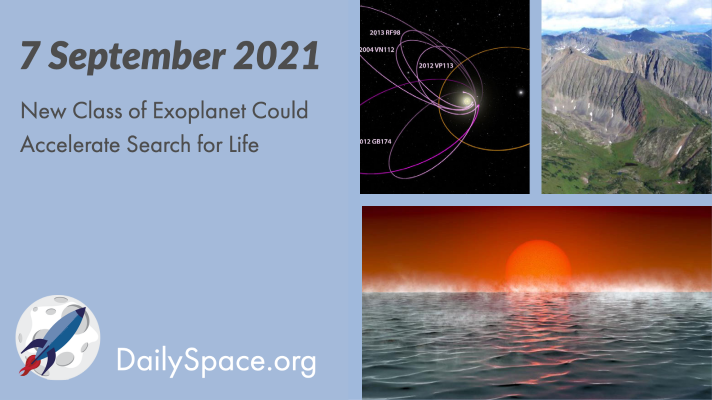
Sep 8, 2021 | Asteroids, Astrobiology, Climate Change, Daily Space, Earth, Exoplanets, Galaxies, Mars, Neutron Stars / Pulsars, Our Solar System, Perseverance, Supermassive Black Holes, Supernovae, Very Large Array
Hycean worlds have hydrogen-rich atmospheres and are covered in oceans, making them prime candidates for the search for life outside our own solar system. These worlds are also more numerous and easier to find than Earth-like exoplanets. Plus, an update on the search for Planet 9 and how volcanoes may provide a climate safety valve.
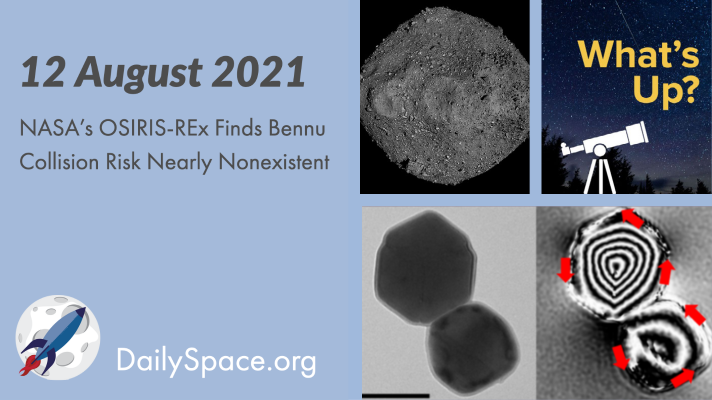
Aug 13, 2021 | Asteroids, Daily Space, Earth, ESA, Exoplanets, OSIRIS-REx, Our Solar System, Sky Watching, Spacecraft, Stars, Venus
After careful analysis of orbital data, gravitational forces, and several other factors, NASA’s OSIRIS-REx team calculated the risk of a collision with near-Earth asteroid Bennu to be 0.057% through 2300. Plus, magnetites in meteorites reveal solar system history, and the constellation Ophiuchus is What’s Up.
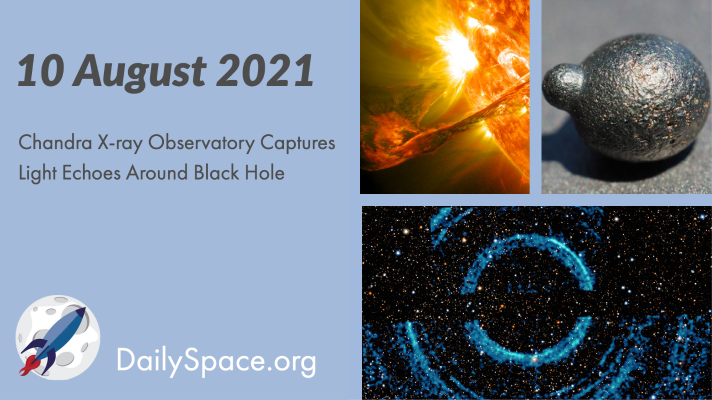
Aug 11, 2021 | Asteroids, Black Holes (Stellar), Daily Space, Earth, Jupiter, Mars, Mars 2020, Perseverance, Stars, The Sun
Based on X-ray detections from the Neil Gehrels Swift Observatory, scientists used the Chandra X-ray Observatory and found rings called light echoes moving out from a black hole and its companion star, reflecting off the surrounding dust clouds. Plus, solving the puzzle of the Sun and using glassy nodules to find a meteorite impact.
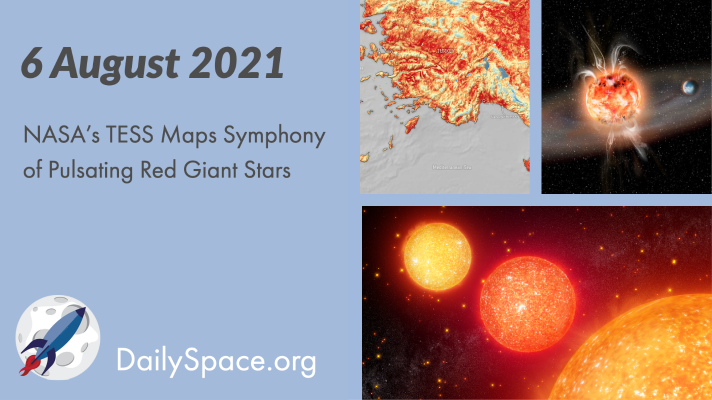
Aug 9, 2021 | Climate Change, Daily Space, Earth, Exoplanets, Neutron Stars / Pulsars, Planetary Nebulae, Stars, Supernovae
NASA’s TESS spacecraft, which is primarily used to search for exoplanets, has now observed a veritable symphony of pulsating red giant stars, each with its own internal vibrations. This work was presented at this week’s TESS Science Conference. Plus, some more climate change news (bad) and superflares may be less harmful to exoplanets than thought (good).
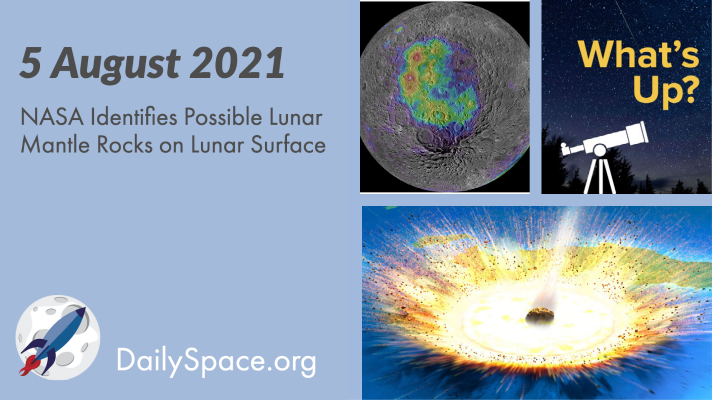
Aug 6, 2021 | Asteroids, Comets, Daily Space, Earth, Jupiter, Mercury, Moon, Sky Watching, Spacecraft, Stars, Supernovae, Venus, White Dwarfs
Two new studies have possibly identified regions on the Moon’s surface that could contain pieces of the lunar mantle, which would be possible sample targets for the Artemis mission. Plus, Venus gets a double flyby next week, and it’s all about asteroids and meteor showers in this week’s What’s Up.








 We record most shows live, on Twitch. Follow us today to get alerts when we go live.
We record most shows live, on Twitch. Follow us today to get alerts when we go live.